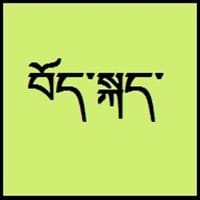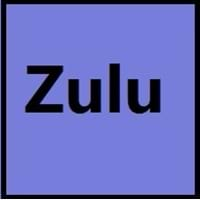Countries
China, Nepal
South Africa
National Language
Nepal, Tibet
South Africa
Second Language
Not spoken in any of the countries
Botswana, Lesotho, Malawi, Mozambique, Swaziland, Zimbabwe
Speaking Continents
Asia
Africa
Minority Language
China, India, Nepal
Not spoken in any of the countries
Regulated By
Committee for the Standardisation of the Tibetan Language
Pan South African Language Board
Interesting Facts
- Tibetan dialects vary alot, so it's difficult for tibetans to understand each other if they are not from same area.
- Tibetan is tonal with six tones in all: short low, long low, high falling, low falling, short high, long high.
- The meaning of word "Zulu" means "Sky"and Zulu was the name of the ancestor who founded the Zulu royal line in about 1670.
- Zulu language has many loanwords borrowed from Afrikaans and English Languages.
Similar To
Not Available
Xhosa Language
Derived From
Not Available
Not Available
Alphabets in
Tibetan-Alphabets.jpg#200
Zulu-Alphabets.jpg#200
Scripts
Tibetan alphabet, Tibetan Braille
Latin
Writing Direction
Left-To-Right, Horizontal
Not Available
Hello
བཀྲ་ཤིས་བདེ་ལེགས། (tashi delek)
Sawubona
Thank You
ཐུགས་རྗེ་ཆེ་། (tujay-chay)
Ngiyabonga
How Are You?
ཁྱེད་རང་སྐུ་གཇུགས་བདེ་པོ་ཡིན་པས།
(kayrang kusu debo yimbay?)
unjani
Good Night
གཟིམ་ལཇག་གནང་དགོས་། (sim-jah nahng-go)
okuhle ebusuku
Good Evening
དགོང་དྲོ་བདེ་ལེགས།
okuhle kusihlwa
Good Afternoon
ཉིན་གུང་བདེ་ལེགས།
okuhle ntambama
Good Morning
སྔ་དྲོ་བདེ་ལེགས། (nga-to delek)
okuhle ekuseni
Please
thu-je zig / ku-chee.
Ngiyacela
Sorry
ཀོང་དགས་། (gawn-da)
Ngiyaxolisa
Bye
ག་ལེར་ཕེབས་། (kha-leh phe)
bye
I Love You
ང་ཁྱེད་རང་ལ་དགའ་པོ་ཡོད་ (nga kayrâng-la gawpo yö)
Ngiyakuthanda wena
Excuse Me
དགོངས་དག བཟོད་དུ་གསོལ། ཐུགས་རྗེ་གཟིགས།
Uxolo
Dialect 1
Central Tibetan
Qwabe
Where They Speak
China, India, Nepal
Gabon, South Africa
How Many People Speak
Not Available
Dialect 2
Khams Tibetan
central KwaZulu-Natal Zulu
Where They Speak
Bhutan, China
Georgia, South Africa
How Many People Speak
Not Available
Dialect 3
Amdo Tibetan
Ndebele
Where They Speak
China
Zimbabwe
How Many People Speak
Not Available
Speaking Population
Not Available
Second Language Speakers
Not Available
Native Name
བོད་སྐད་ (pö-gay)
isiZulu
Alternative Names
Bhotia, Dbus, Dbusgtsang, Phoke, Tibetan, U, Wei, Weizang, Zang
Isizulu, Zunda
French Name
tibétain
zoulou
German Name
Tibetisch
Zulu-Sprache
Pronunciation
Not Available
Not Available
Ethnicity
tibetan people
Zulu people
Language Family
Sino-Tibetan Family
Niger-Congo Family
Subgroup
Tibeto-Burman
Benue-Congo
Branch
Not Available
Beatu
Early Forms
Old Tibetan, Classical Tibetan
urban Zulu
Standard Forms
Standard Tibetan
Deep Zulu
Language Position
Not Available
Signed Forms
Tibetan Sign Language
Not Available
Scope
Not Available
Individual
ISO 639 6
Not Available
Not Available
Glottocode
tibe1272
zulu1248
Linguasphere
No data Available
99-AUT-fg
Language Type
Not Available
Living
Language Linguistic Typology
Not Available
Subject-Verb-Object
Language Morphological Typology
Not Available
Not Available
All Tibetan and Zulu Dialects
Most languages have dialects where each dialect differ from other dialect with respect to grammar and vocabulary. Here you will get to know all Tibetan and Zulu dialects. Various dialects of Tibetan and Zulu language differ in their pronunciations and words. Dialects of Tibetan are spoken in different Tibetan Speaking Countries whereas Zulu Dialects are spoken in different Zulu speaking countries. Also the number of people speaking Tibetan vs Zulu Dialects varies from few thousands to many millions. Some of the Tibetan dialects include: Central Tibetan, Khams Tibetan. Zulu dialects include: Qwabe , central KwaZulu-Natal Zulu. Also learn about dialects in South American Languages and North American Languages.
Tibetan and Zulu Speaking population
Tibetan and Zulu speaking population is one of the factors based on which Tibetan and Zulu languages can be compared. The total count of Tibetan and Zulu Speaking population in percentage is also given. The percentage of people speaking Tibetan language is Not Available whereas the percentage of people speaking Zulu language is 0.16 %. When we compare the speaking population of any two languages we get to know which of two languages is more popular. Find more details about how many people speak Tibetan and Zulu on Tibetan vs Zulu where you will get native speakers, speaking population in percentage and native names.
Tibetan and Zulu Language Codes
Tibetan and Zulu language codes are used in those applications where using language names are tedious. Tibetan and Zulu Language Codes include all the international language codes, glottocodes and linguasphere.





